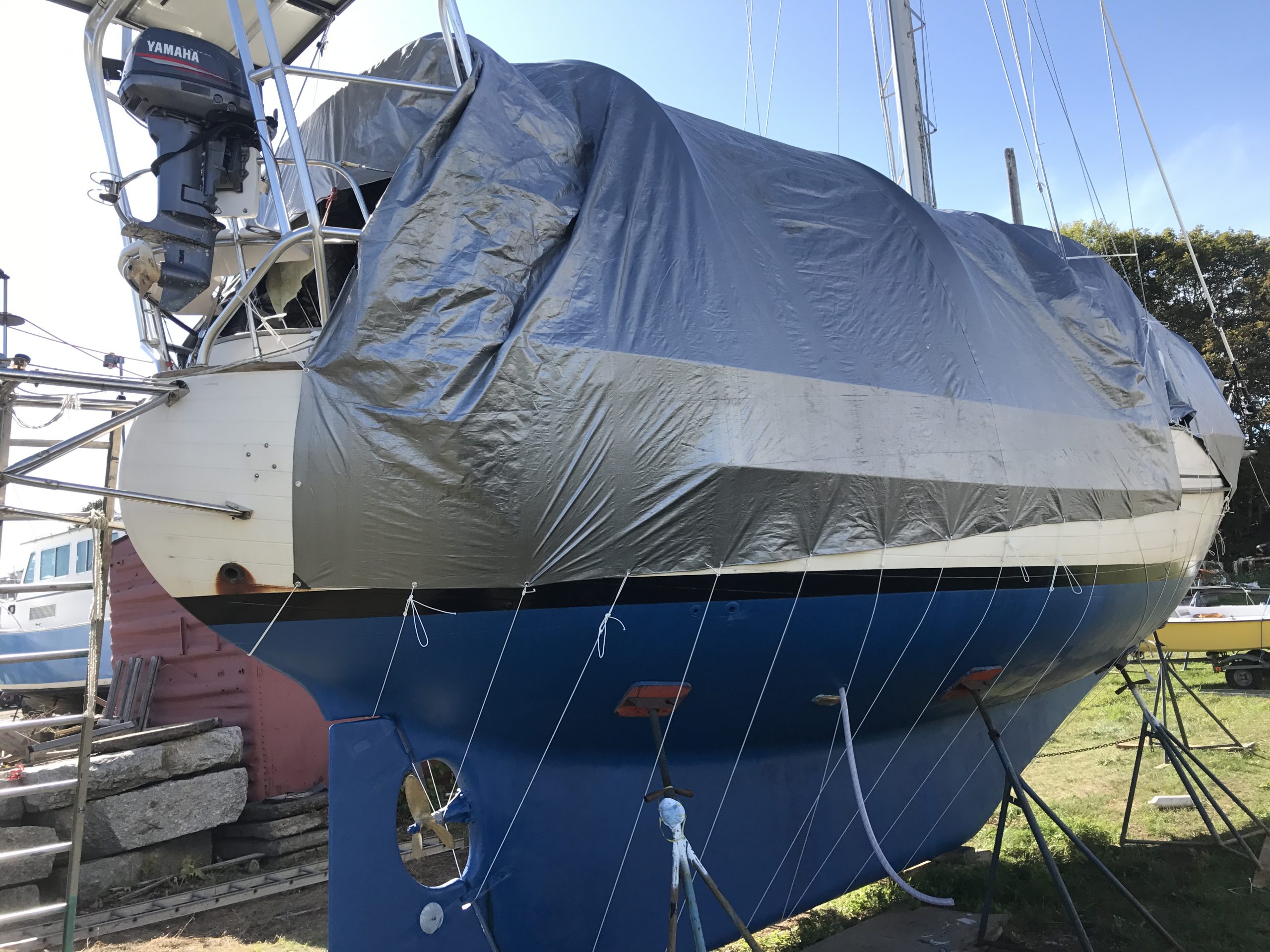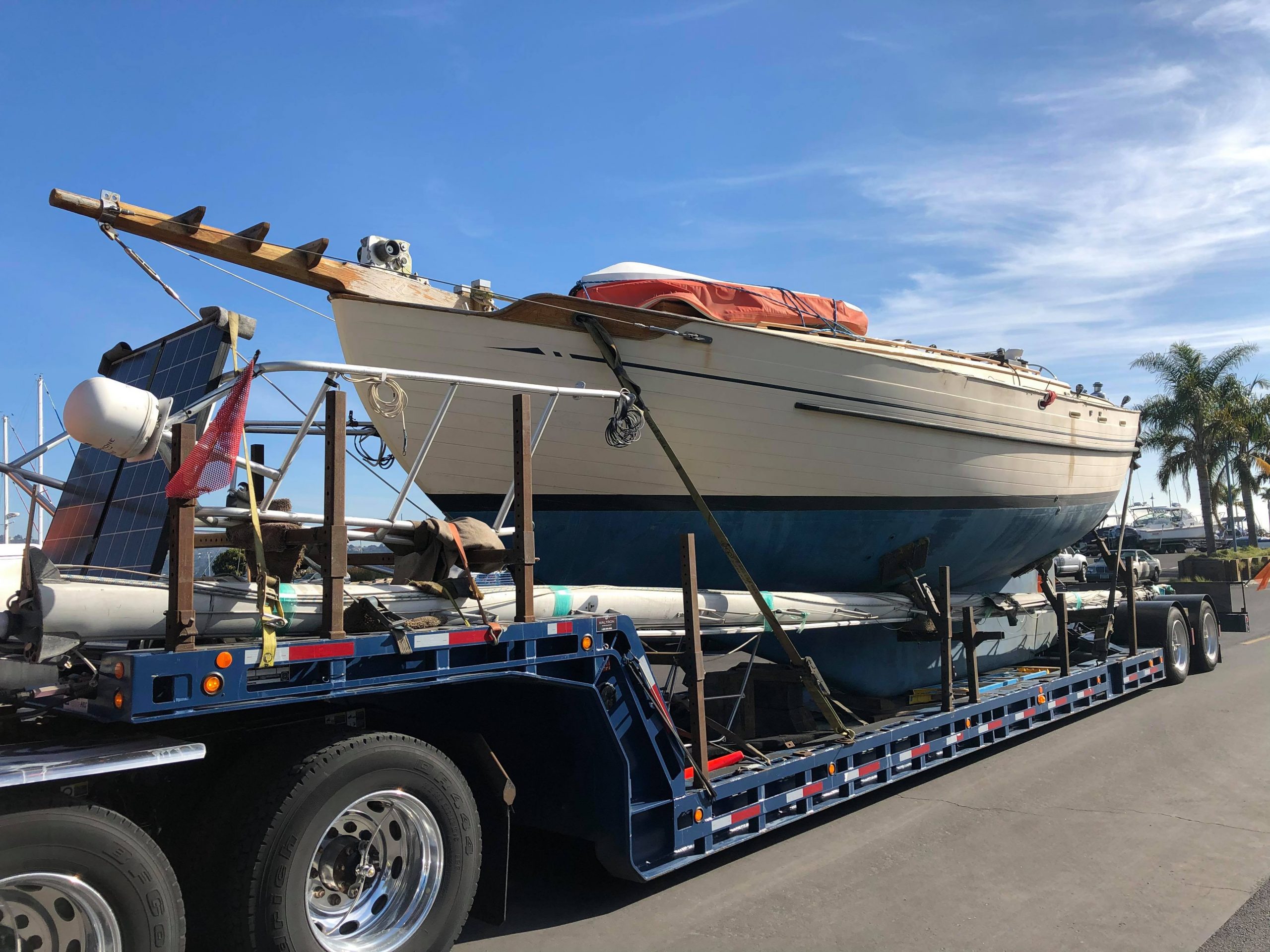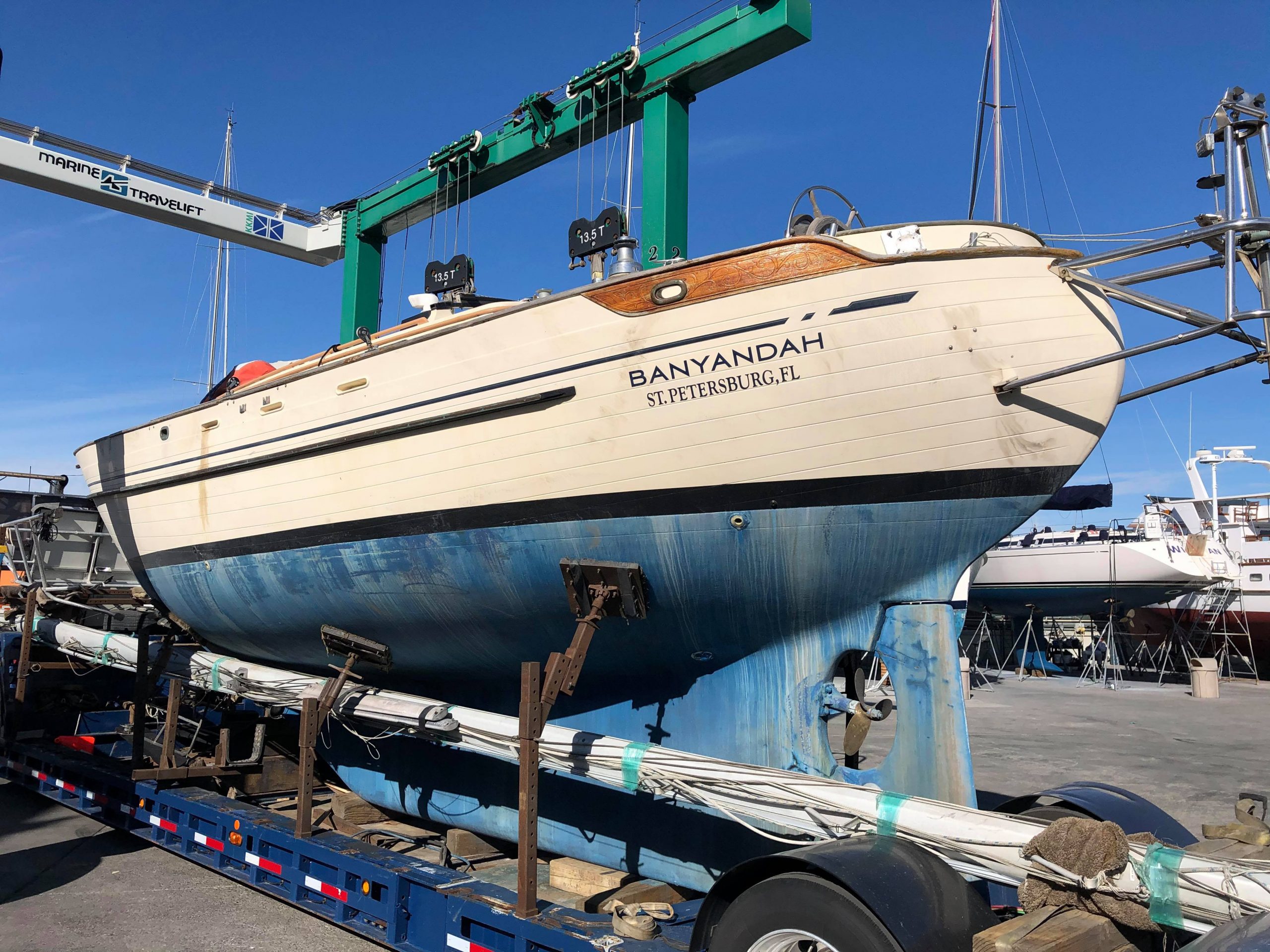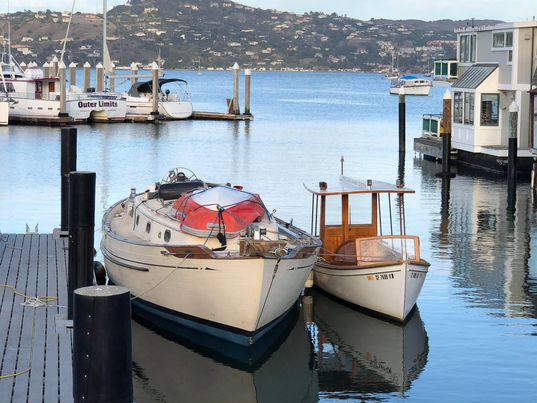
By Sea or by Land, Sailboats Are Meant to Keep Moving
We recently posted a story about the proposed improvements to overland transport between Salina Cruz in Oaxaca and Coatzacoalcos in Veracruz, Mexico. This made us wonder how many sailors have moved their boat across the land, or will do so at some time. Clearly it’s an option many of us take when transporting a small boat, perhaps a dinghy or trailer-sailer. But what about when your boat is big, say 30-ft or more? Bigger boat equals bigger truck, equals bigger cost. Particularly when it’s a long way. But sometimes it has to be done lest the boat in question deteriorate, becoming just one more among the many neglected or abandoned sailboats left to rot in some faraway yard. We had been grappling with that dilemma for about three years as our 37-ft Tayana lay wasting away in a Maine boatyard.
“We hauled Banyandah in 2016 after a summer season in Maine,” the boat’s co-owner Jay explained, “thinking we’d spend the winter with family in California and go back to our boat the following spring. We eventually got back in the fall. Our plan was to paint the bottom and do a few jobs, then put her back into the water and head south. Then we got a call for a job interview in the Bay Area, and they were paying for our flights. So we tidied up, spent a day wrapping the boat, and got on a bus for Portland. We wouldn’t have done the bottom yet if we’d known.”

Although we were successful in the interview, the job didn’t pan out as hoped, but by that time it was already too late to sail out of Maine. The next three summers saw us tied to jobs on the West Coast, all the while hoping for a window in which to move our boat south, ahead of the inevitable winter.
“We’d wrapped her as well as we could with tarps and a million lines. We thought she looked pretty good, and according to the yard the cover held well for a few seasons. But by last summer the tarps were shredded. We had to do something before she was snowed in again.”
Eventually we decided to truck the boat just to get it out of the snow country and make it accessible year-round. Easier said than done. Our first hurdle was to digest the enormity of the task, particularly the cost.
“We knew it would be expensive,” Jay said, “about the price of a new engine. But it had to be done; we’d talked about it long enough.”
Then we had to find a carrier who not only was willing to do the job, but also had a trailer big enough to carry the 27-ton vessel. The first contractor turned up, looked at the boat and said, “We’re gonna need a bigger truck.”
“Yeah, that was a bit annoying,” Jay added. “It took a while for him to actually show up. The yard was on standby, we’d paid our bill, and now we had start again and find a new shipper.” Fortunately the next truck to arrive was the right size, and on January 12, Banyandah began her journey west. It was exciting to think that the boat we’d spent almost two years living on, and left behind four years ago, would soon be close at hand.

Banyandah arrived in Sausalito 10 days after leaving Maine, and although she was home, it was also a somewhat disheartening moment. She was intact, but looking less grand than when we had left her in 2017. Her once-fresh bottom paint was faded and streaked with runoff; her mast had been removed, along with the stanchions, bimini, solar panels and cockpit framing. Even the dinghy, with its deflated shell draped over the cabin top, looked sad and dejected. We’d known she would need work, but it was a bittersweet moment to see her strapped to the trailer like an old carcass. The years of exile had not treated her kindly. However, to state the obvious silver lining, she was home and in good hands.

“The good thing is,” Jay said, “that she’s here. We can clean her up, fix her up, and get her back into the water to do what she was meant to do.”

Banyandah will have a fresh start in her new cruising grounds and will live to see many more years of sailing. But what of the boats that have not yet been reunited with their owners? Will they find their way overland and into a new life? Or will they perhaps be discovered right where they are at this moment by an enthusiastic sailor or even a newbie, who will bring them back to life and sail them to their new homes?
What’s the farthest you’ve trucked your boat? Or perhaps you’ve even moved it by ship? Let us know at [email protected]

I agree. We moved JAVA HEAD, my parents 1933 Mower designed, Hodgdon built,in Maine. She was in SF Bay. We shipped her to Maine, back home, to be restored. There she is under cover and being lovingly brought back
to her original beautiful shape.